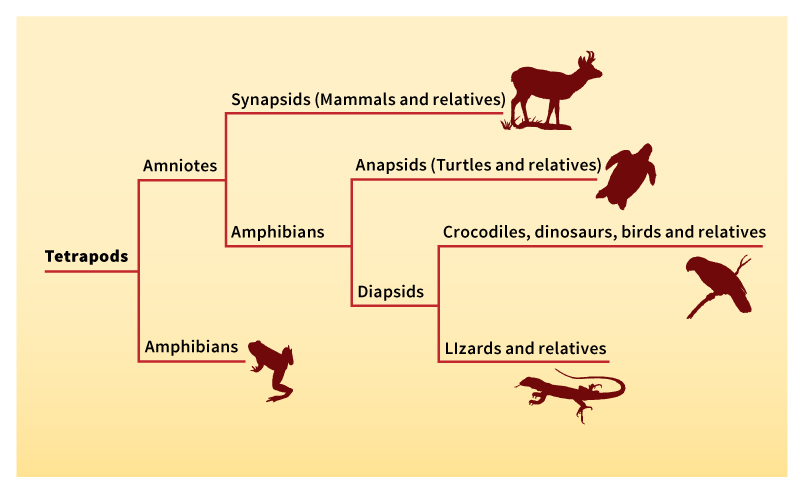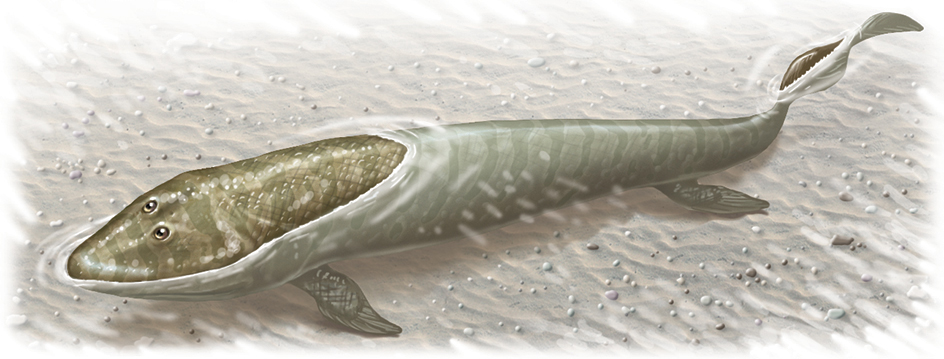Tetrapod is an animal with a backbone and usually with four limbs. All living and extinct amphibians, birds, mammals, and reptiles—including snakes—are tetrapods. Early forms of tetrapods were the first vertebrates (animals with backbones) to live on land. Many of these early tetrapods left no modern descendants.

Early tetrapods.
The oldest known tetrapod fossils come from rocks that are about 370 million years old. But trace fossil footprints suggest that these animals may have developed by about 395 million years ago.
Tetrapods evolved (changed over many generations) from lobe-finned fishes. Some of these fish developed a unique set of features that helped them to thrive in shallow waters and wetlands. Their fleshy fins became supported mostly by a bony skeleton rather than by fin rays (long, narrow rods in the skin). These limblike fins were useful for moving in shallow water. The creatures also had lunglike organs and a snout with a nasal passage. These features likely helped them gulp air from above the surface of waters with relatively low levels of oxygen. The animals also developed relatively flat skulls with a solid roof and eyes on the top.

The evolution of tetrapods from lobe-finned fishes took place over millions of years. Scientists classify an animal as a tetrapod only if it has limbs with digits (fingers or toes) and no fin rays. The earliest tetrapods apparently continued to live in water. Some may have developed a way of life similar to that of modern amphibians, especially in their need to lay eggs in water. After many millions of years, some evolved features that enabled them to spend much of their lives on land. Such features include more powerful limbs for walking and changes that helped the shoulders, hips, and back to support the body.
Modern tetrapods.
Most early tetrapods left no modern descendants. However, some early tetrapods gave rise to amphibians and amniotes. Amniotes produce eggs protected by a shell that prevent them from drying out. That enabled amniotes to live entirely on land. Amniotes had evolved by about 320 million years ago. Early amniotes were the ancestors of all mammals and reptiles. Early reptiles gave rise to dinosaurs and other groups. Dinosaurs gave rise to birds.
The word tetrapod means four-footed, but not all tetrapods have limbs with feet. The limbs of sea turtles and whales became paddlelike as their ancestors returned to water. The forelimbs of bats and birds became wings. Snakes appear to have no limbs. But snakes descended from limbed reptiles, and some still have traces of hind limbs or hip bones. These animals are all tetrapods because they all descended from four-footed ancestors that lived millions of years ago.
See also Amphibian (The history of amphibians); Coelacanth; Fish (The first fish); Mammal (The ancestors of mammals); Prehistoric animal (The move onto land); Tiktaalik.
